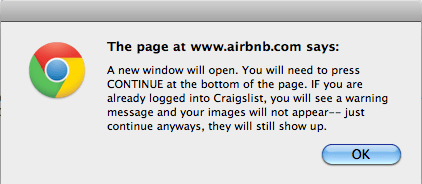Andrew Chen

The rise of the Growth Hacker
The new job title of “Growth Hacker” is integrating itself into Silicon Valley’s culture, emphasizing that coding and technical chops are now an essential part of being a great marketer. Growth hackers are a hybrid of marketer and coder, one who looks at the traditional question of “How do I get customers for my product?” and answers with A/B tests, landing pages, viral factor, email deliverability, and Open Graph. On top of this, they layer the discipline of direct marketing, with its emphasis on quantitative measurement, scenario modeling via spreadsheets, and a lot of database queries. If a startup is pre-product/market fit, growth hackers can make sure virality is embedded at the core of a product. After product/market fit, they can help run up the score on what’s already working.
This isn’t just a single role – the entire marketing team is being disrupted. Rather than a VP of Marketing with a bunch of non-technical marketers reporting to them, instead growth hackers are engineers leading teams of engineers. The process of integrating and optimizing your product to a big platform requires a blurring of lines between marketing, product, and engineering, so that they work together to make the product market itself. Projects like email deliverability, page-load times, and Facebook sign-in are no longer technical or design decisions – instead they are offensive weapons to win in the market.
The stakes are huge because of “superplatforms” giving access to 100M+ consumers
These skills are invaluable and can change the trajectory of a new product. For the first time ever, it’s possible for new products to go from zero to 10s of millions users in just a few years. Great examples include Pinterest, Zynga, Groupon, Instagram, Dropbox. New products with incredible traction emerge every week. These products, with millions of users, are built on top of new, open platforms that in turn have hundreds of millions of users – Facebook and Apple in particular. Whereas the web in 1995 consisted of a mere 16 million users on dialup, today over 2 billion people access the internet. On top of these unprecedented numbers, consumers use super-viral communication platforms that rapidly speed up the proliferation of new products – not only is the market bigger, but it moves faster too.
Before this era, the discipline of marketing relied on the only communication channels that could reach 10s of millions of people – newspaper, TV, conferences, and channels like retail stores. To talk to these communication channels, you used people – advertising agencies, PR, keynote speeches, and business development. Today, the traditional communication channels are fragmented and passe. The fastest way to spread your product is by distributing it on a platform using APIs, not MBAs. Business development is now API-centric, not people-centric.
Whereas PR and press used to be the drivers of customer acquisition, instead it’s now a lagging indicator that your Facebook integration is working. The role of the VP of Marketing, long thought to be a non-technical role, is rapidly fading and in its place, a new breed of marketer/coder hybrids have emerged.
Airbnb, a case study
Let’s use the case of Airbnb to illustrate this mindset. First, recall The Law of Shitty Clickthroughs:
Over time, all marketing strategies result in shitty clickthrough rates.
The converse of this law is that if you are first-to-market, or just as well, first-to-marketing-channel, you can get strong clickthrough and conversion rates because of novelty and lack of competition. This presents a compelling opportunity for a growth team that knows what they are doing – they can do a reasonably difficult integration into a big platform and expect to achieve an advantage early on.
Airbnb does just this, with a remarkable Craigslist integration. They’ve picked a platform with 10s of millions of users where relatively few automated tools exist, and have created a great experience to share your Airbnb listing. It’s integrated simply and deeply into the product, and is one of the most impressive ad-hoc integrations I’ve seen in years. Certainly a traditional marketer would not have come up with this, or known it was even possible – instead it’d take a marketing-minded engineer to dissect the product and build an integration this smooth.
Here’s how it works at a UI level, and then we’ll dissect the technology bits:
(This screenshots are courtesy of Luke Bornheimer and his wonderful answer on Quora)
Looks simple, right? The impressive part is that this is done with no public Craigslist API! It turns out, you have to look closely and carefully at Craigslist in order to accomplish an integration like this. Note that it’s 100X easier for me to reverse engineer something that’s already working versus coming up with the reference implementation – and for this reason, I’m super impressed with this integration.
Reverse-engineering “Post to Craigslist”
The first thing you have to do is to look at how Craigslist allows users to post to the site. Without an API, you have to write a script that can scrape Craigslist and interact with its forms, to pre-fill all the information you want.
The first thing you can notice from playing around with Craigslist is that when you go to post something, you get a unique URL where all your information is saved. So if you go to https://post.craigslist.org you’ll get redirected to a different URL that looks like https://post.craigslist.org/k/HLjRsQyQ4RGu6gFwMi3iXg/StmM3?s=type. It turns out that this URL is unique, and all information that goes into this listing is associated to this URL and not to your Craigslist cookie. This is different than the way that most sites do it, where a bunch of information is saved in a cookie and/or server-side and then pulled out. This unique way of associating your Craigslist data and the URL means that you can build a bot that visits Craigslist, gets a unique URL, fills in the listing info, and then passes the URL to the user to take the final step of publishing. That becomes the foundation for the integration.
At the same time, the bot needs to know information to deal with all the forms – beyond filling out the Craigslist category, which is simple, you also need to know which geographical region to select. For that, you’d have to visit every Craigslist in every market they serve, and scrape the names and codes for every region. Luckily, you can start with the links in the Craiglist sidepanel – there’s 100s of different versions of Craigslist, it turns out.
If you dig around a little bit you find that certain geographical markets are more detailed than others. In some, like the SF Bay Area, there’s subareas (south bay, peninsula, etc.) and neighborhoods (bernal, pacific heights) whereas in other markets there’s only subareas, or there’s just the market. So you’d have to incorporate all of that into your interface.
Then there’s the problem of the listing itself – by default, Craigslist works by giving you an anonymous email address which you use to communicate to potential customers. If you want to drive them to your site, you’d have to notice that you can turn off showing an email, and just provide the “Contact me here” link instead. Or, you could potentially fill a special email address like listing-29372@domain.com that automatically directs inquiries to the right person, which can be done using services like Mailgun or Sendgrid.
Finally, you’ll want the listing to look good – it turns out Craigslist only supports a limited amount of HTML, so you’ll need to work to make your listings work well within those constraints.
Completing the integration is only the beginning – once it’s up, you’d have to optimize it. What’s the completion % once sometime starts sharing their listing out to Craigslist? How can you change the flow, the call to action, the steps in the form, to increase this %? And similarly, when people land from Craigslist, how do you make sure they are likely to complete a transaction? Do they need special messaging?
Tracking all of this requires additional work with click-tracking with unique URLs, 1×1 GIFs on the Craigslist listing, and many more details.
Long story short, this kind of integration is not trivial. There are many little details to notice, and I wouldn’t be surprised if the initial integration took some very smart people a lot of time to perfect.
No traditional marketer would have figured this out
Let’s be honest, a traditional marketer would not even be close to imagining the integration above – there’s too many technical details needed for it to happen. As a result, it could only have come out of the mind of an engineer tasked with the problem of acquiring more users from Craigslist. Who knows how much value Airbnb is getting from this integration, but in my book, it’s damn impressive. It taps into a low-competition, huge-volume marketing channel, and builds a marketing function deeply into the product. Best of all, it’s a win-win for everyone involved – both the people renting out their places by tapping into pre-built demand, and for renters, who see much nicer listings with better photos and descriptions.
This is just a case study, but with this type of integration, a new product is able to compete not just on features, but on distribution strategy as well. In this way, two identical products can have 100X different outcomes, just based on how well they integrate into Craigslist/Twitter/Facebook. It’s an amazing time, and a new breed of creative, technical marketers are emerging. Watch this trend.
So to summarize:
- For the first time ever, superplatforms like Facebook and Apple uniquely provide access to 10s of millions of customers
- The discipline of marketing is shifting from people-centric to API-centric activities
- Growth hackers embody the hybrid between marketer and coder needed to thrive in the age of platforms
- Airbnb has an amazing Craigslist integration
This post originally appeared on Andrew Chen’s blog.
About the Author
Andrew Chen is an entrepreneur, advisor, and angel investor focused on consumer internet, metrics, and acquisition. His experiences include:
- Being an advisor/angel for early stage startups including AppSumo, Cardpool (acquired by Safeway), Catchfree, Grovo, Launchbit, Qik (acquired by Skype), and others.
- Being a 500Startups mentor.
- Running product marketing and growth for ad tech startup Audience Science, where he started up the ad network business that today reaches over 380 million uniques.
Find this article helpful?
This is just a small sample! Register to unlock our in-depth courses, hundreds of video courses, and a library of playbooks and articles to grow your startup fast. Let us Let us show you!
Submission confirms agreement to our Terms of Service and Privacy Policy.
Already a member? Login
No comments yet.
Start a Membership to join the discussion.
Already a member? Login




